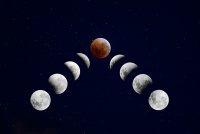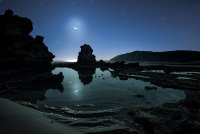Autostakkert 3 is great for stacking images of the moon. Many people use it for Lucky Imaging stacks, but I use it for simple stills stacks like yours and have been pretty Happy. The default settings work well. It can fail though, if the position of the moon within the frame differs a lot between images.Thanks for the heads up. Rushed outside and did a qucik snap. Actually about 20 and I must learn how to stack them.
The result will look slightly blurry initially, but some deconvolution with PS SmartSharpen or a more dedicated tool helps clean that up nicely.
What looks like movement in images of the moon can also be caused by the turbulence in the atmosphere or air around you. Shooting the moon when it's near the horizon or shooting through an open window for example will result in much worse 'shake'.Not sure if it was because of my tripod, or that my balcony isn't sturdy, or because it was close to a whirring outside AC unit, but the image would hardly quit shaking.
Upvote
0


